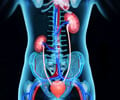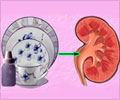The tool predicts future risk of kidney failure and alerts the need to plan for kidney transplants, if necessary, in children with kidney disease.
Highlights:
- Kidney failure risk equation (KFRE) can be used to predict kidney failure in children with kidney disease.
- KFRE has a high degree of accuracy and could be used to reduce the burden of dialysis.
- The tool is already used for adults with the goal of optimizing planning for dialysis.
TOP INSIGHT
The advantage of the Kidney failure risk equation is its use of clinically and readily available data to predict future risk of kidney failure in children.
Children who had dialysis for any amount of time had a 69 percent higher risk of death than children who had had a pre-emptive transplant. The average transplant wait time for a child in the United States with kidney failure is less than one year, with wide geographic variability.
Predicting Kidney Failure
The research team from four institutions compared the risk of kidney failure predicted by the tool with the actual outcomes of 603 children enrolled in the Chronic Kidney Disease in Children study. At one year, 27 children progressed to kidney failure, at two years 67 progressed to kidney failure and at five years 144 had reached that stage.
They found that the tool had a 90 percent probability of discriminating between those children that reached kidney failure and those that would not one year later, 86 percent probability at two years and 81 percent at five years.
In children, kidney failure is usually caused by birth anomalies, hereditary diseases and acquired conditions like lupus that impact the body’s ability to filter waste and excess fluid from the blood.
The children in the study, whose average age was 12, had a glomerular filtration rate (GFR) - a measure of how efficiently the kidneys filter blood - below 60, the benchmark for kidney disease.
The tool predicts future risk by assessing four variables: age, gender, GFR and the ratio of albumin to creatinine levels, a test to determine elevated protein in urine, a marker of kidney damage. A second tool, involving an additional four variables, was found to have a similar level of accuracy.
"Currently less than one quarter of children with kidney failure receive a pre-emptive transplant, despite increasing evidence that it improves survival," Winnicki said.
"By improving our ability to determine when a child with kidney disease will progress to kidney failure, the risk equation enables the clinical team to better plan for transplant."
Other advantages of KFRE
Immunizations should be completed before transplantation because they are less effective afterward, when patients need to take immunosuppressants to prevent rejection of the new organ.
Live vaccines, such as those to prevent measles, mumps and rubella, also could induce disease after transplant, Winnicki noted. As a result, the tool may enable children to receive vaccinations ahead of schedule if kidney failure appears imminent.
Other advantages of accurately predicting the risk of kidney failure include:
- Timely transfer of care to a pediatric nephrologist for children in rural areas that are not served by specialists.
- In children who are unlikely to undergo pre-emptive transplant, the tool may help clinicians decide when to plan for a surgical fistula or graft, instead of starting dialysis with a catheter.
- Both methods are less likely to cause infections and to need revisions, but can only be used after a period of healing, thus requiring planning.
Reference
- Erica Winnicki, Charles McCulloch, Mark Mitsnefes, Susan Furth, Bradley Warady. ’Simple tool may expedite transplants in kids with kidney failure.’ JAMA Pediatrics (2017).
Source-Medindia
 MEDINDIA
MEDINDIA





 Email
Email










